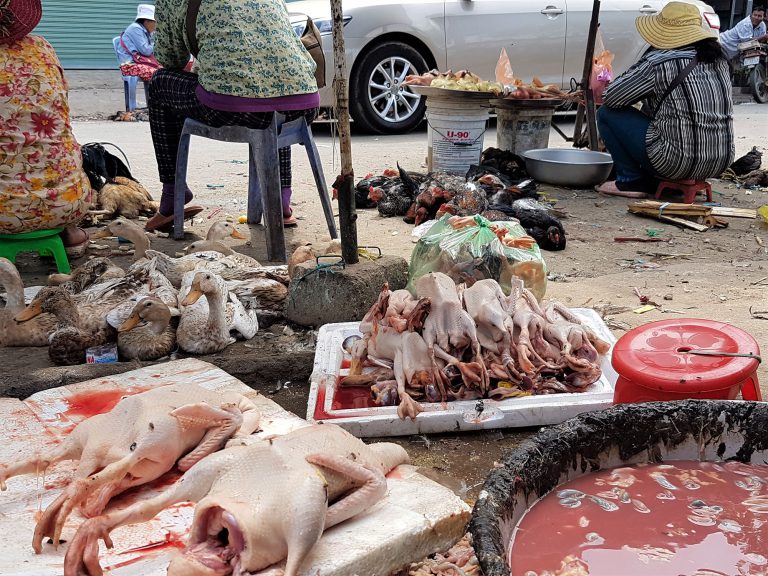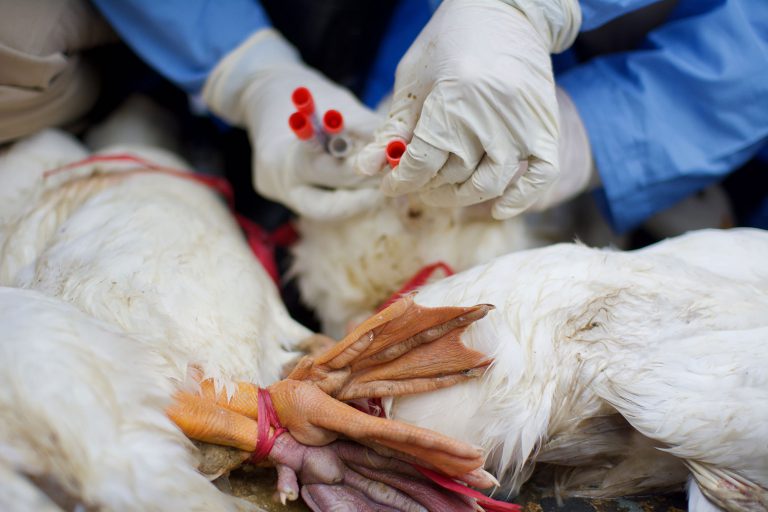Written by: Kristina Osbjer, Researcher at the Department of Clinical Sciences, SLU and Technical Specialist for Animal Health, Food and Agriculture Organization of the United Nations.
The findings and conclusions in this blog post are those of the author and do not necessarily represent the views of the Food and Agriculture Organization of the United Nations.

Although the Coronavirus disease (COVID-19) pandemic came as a surprise to some, the seeds of a Coronavirus pandemic, the weak signals, have been present for more than a decade. As governments and the civil society across the globe are struggling with containing COVID-19 and limit the impact, the research community can play an important role in formulating research to heed warnings and prevent devastating impacts of the next pandemic.
The COVID-19 origin is unknown, but we do know that Corona viruses are circulating in animals, in particular bats, and that some of these Corona viruses have an ability to transmit to humans. Most emerging infectious diseases (EIDs) and almost all recent pandemics originate from animals, most commonly wildlife, and the emergence is often involving close interactions between wildlife, livestock, and people with an elevated risk detected in forested tropical regions experiencing land-use changes and where wildlife biodiversity is high.
Asia – a hotspot for EIDs
South, Southeast Asia and China are recognised as hotspots for EIDs. The region is undergoing fast economic development, resulting in societal and environmental changes. Parallel with a growing population and rising incomes, the demand for higher-value and quality food such as meat is rapidly increasing. A preference for fresh meat from animals butchered at the counter together with limited access to chilling facilities lead to meat being commonly purchased in ‘wet markets’ where live animals are sold and slaughtered on site. In the case of avian influenza and SARS, viral spread to people from poultry and wildlife, respectively, was traced back to wet markets. Wet markets are also suspected to have played a key role in the initial spillover of Corona virus to humans, resulting in COVID-19. High animal density, limited hygiene and biosecurity practices in these wet markets are contributing to dissemination of viruses. Efforts have been made to change, and in some countries to ban wet markets—especially where many species, including wildlife are mixed. A temporary ban in wildlife trade was recently imposed in China as a result of COVID-19, however, enforcement of such bans remains difficult. The strong consumer demand for fresh meat and a range of social, economic and cultural factors contribute to sustain the markets.

The rising demand for meat is spurring expansions in industrial-scale animal farming
More than half of the world’s pork and poultry is produced in Asia. In 2018, China alone had around half of the global pig herd and accounted for half of the global pork consumption. The rising demand for meat is spurring expansions in industrial-scale animal farming resulting in challenges in preventing and confining diseases. Low profit margins and weak animal welfare requirements commonly result in poor farm biosecurity and animal health management which in turn lead to an increased use of antibiotics. Antibiotic resistance, largely driven by the antibiotic consumption, is considered a growing global health threat and it is estimated that the livestock industry in China alone, will use up to 30% of the global antibiotic production by 2030.
The fast pig expansion has also resulted in the emergence of new diseases. In 2018 African Swine Fever (ASF) hit China as the first country ever in Asia, spreading rapidly to nearby countries leading to a loss of a quarter of the world’s pig population by the end of 2019. The ASF infect only wild and domestic pigs, but the high death rates and enforced massive culling to prevent further disease spread has led to huge economic losses and pork prices soaring to record highs. The extent of the impact of ASF on the global live animal and meat trade was unpredicted, and the disease has put a high pressure on Governments and a shift in animal movements. The lack of pork and higher pork prices have encouraged Asian consumers to substitute towards alternative protein sources, which most likely have changed the meat sourcing and supply in wet markets, including wildlife.

A stronger multi-sectoral approach for disease prevention and control
The ASF spread to Asia and the global emergence of COVID-19 are reminders of how vulnerable our interconnected world is to global impact of diseases in humans and animals and highlight the need for broader systems thinking in the fight against EIDs. A single sector approach, neglecting the human-animal-environment interface and the socio-economic and cultural bearings of diseases will cause future failures in controlling health threats that could spark future pandemics. A stronger One Health approach in which multiple sectors work together to enhance health security and better public health outcomes needs to be fully adopted. Early evidence indicates that the health and economic impacts of the COVID-19 are being disproportionately borne by poor people. The biggest impact will be seen in low and middle income countries. It is of global concern to strengthen capacities in low and middle income countries to prevent, detect and control infectious diseases at the source, with an emphasis on early identification of, and response to, health threats in animals before they cause serious public health, economic, and development concerns. Here, the research community can play an important role in raising local research capacities and generate science to enable evidence-based policies and decision making to prevent future pandemics and safeguard public health and livelihoods.
